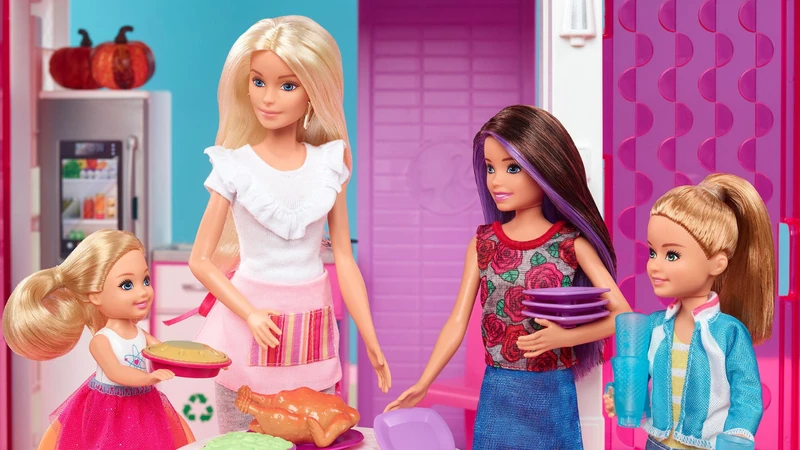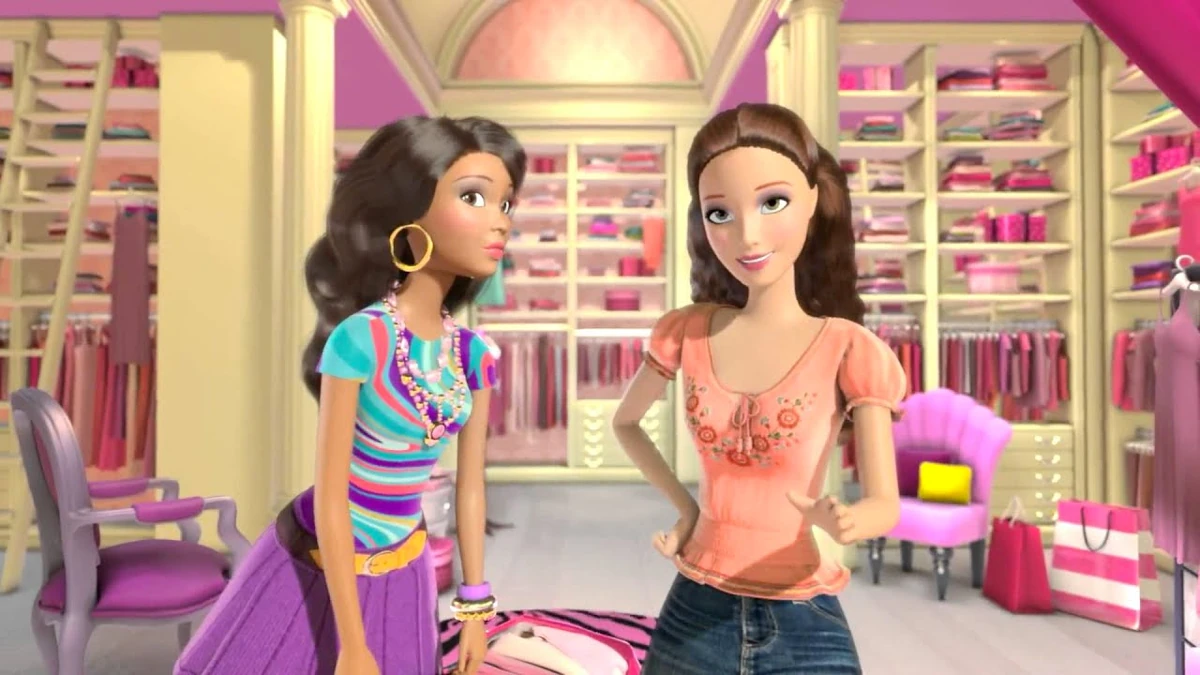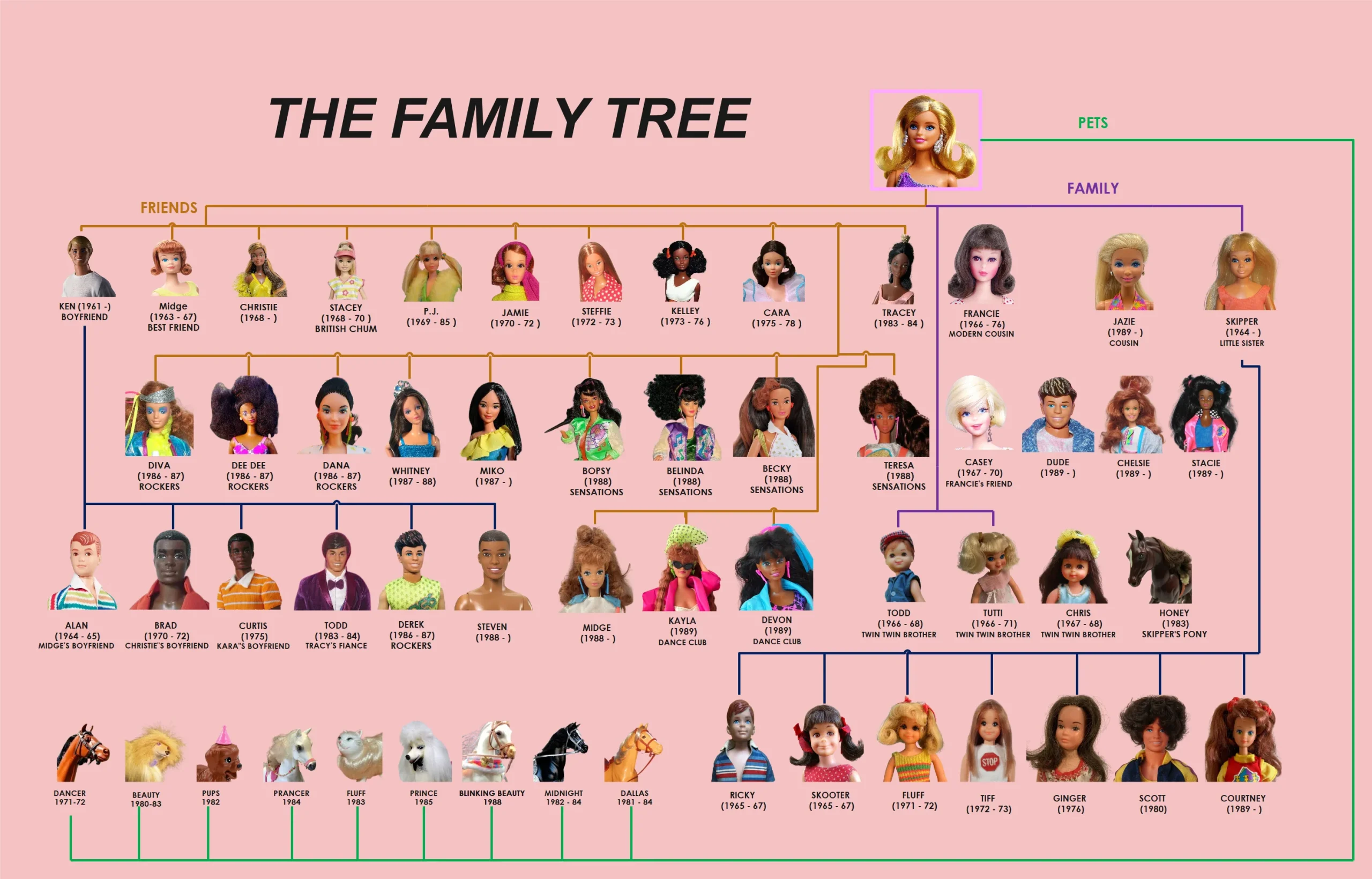Barbie, one of the most recognizable dolls across the globe, is not only a fashion icon but also a central character in an extensive network of friends and family. This network, like the doll herself, has evolved over time to reflect changing societal values and trends. Barbie’s story begins with her boyfriend, Ken, introduced in 1961, who has remained a constant figure in the Barbie universe.
Barbie also has a younger sister, Skipper, and several friends such as Midge, Teresa, and Nikki, each with their own unique personalities and styles. Over the years, the Barbie franchise has expanded to include an even broader range of characters, such as Barbie’s cousin Francie, her Hispanic friend, Teresa, and her African American friend, Nikki.
These characters come from diverse backgrounds and have different careers, reflecting the multicultural, multi-occupational world we live in today. Even Barbie’s pets, like her puppy Taffy, have become beloved characters in their own right. The Barbie line also includes the family of Barbie’s boyfriend, Ken, with his siblings and parents.
The many friends and family members in Barbie’s world serve to create a richer narrative for the doll, offering children a range of characters with which to play and identify. The diversity among Barbie’s friends and family provides children with a broader view of the world, encouraging them to appreciate differences and recognize the value of everyone’s unique contributions.

Midge: Meet Barbie’s Ever-Faithful Best Friend
Midge Hadley, the ever-faithful best friend of iconic fashion doll, Barbie, made her debut in the world of toys in 1963. As the first character to be introduced in the Barbie doll line, Midge has been a constant companion to Barbie, sharing numerous adventures, experiences, and fashion trends. She is often depicted with auburn hair and freckles, a stark contrast to Barbie’s blonde hair and clear complexion, reflecting the diverse beauty and individuality of every girl. Midge, like Barbie, has evolved with the times, from her initial introduction as a “straight leg” doll to the modern, articulable character she is today.
She has been portrayed in various roles, including a bride, a pregnant mom, and even an astronaut, highlighting the limitless possibilities for young girls. Despite facing some criticism and controversy in the past, Midge continues to be a beloved character in the Barbie universe, symbolizing the importance of loyal friendship and supporting Barbie in her countless ventures. With her distinctive look and personality, Midge has undeniably contributed to the enduring success and appeal of the Barbie franchise.
She truly embodies the message that each girl is unique and can achieve anything they set their minds to, just like Barbie. In the toy world, Midge is more than just a doll, she is a beacon of companionship, relatability, and inspiration.
Allan (or Alan?): Unraveling the Mystery of Barbie’s Companion
The world of Barbie dolls is teeming with a colorful cast of characters, among which Allan (or is it Alan?) stands out as an intriguing enigma. Introduced in 1964, Allan was first marketed as Ken’s buddy and Midge’s beau, a charming youngster with a hint of mischief in his eyes. The toy was discontinued in 1966, only to be brought back to life under the name ‘Alan’ in 1991, this time as Midge’s husband. The subtle change in spelling, from ‘Allan’ to ‘Alan’, has sparked curiosity among Barbie collectors and enthusiasts, leading to an interesting debate about this character’s true identity. Some argue that ‘Alan’ is an entirely different character, while others insist that he’s simply a matured and more sophisticated version of the original ‘Allan’.
The ambiguity is further fueled by the fluctuating narrative surrounding this character. For instance, in the 2002 ‘Happy Family’ line of Barbie dolls, Alan is presented as the father of Midge’s children, while in other versions, he seems to have vanished from the story entirely. In the 2010s, Mattel introduced a new line called ‘Barbie: Life in the Dreamhouse’, where ‘Ryan’, Ken’s brother, seems to have taken over the role that Allan or Alan used to play.
Despite these inconsistencies, both spellings of the name have been used interchangeably by Mattel in various Barbie series, continually stirring up the mystery surrounding this character. Some fans have taken it upon themselves to delve into this riddle, using clues from Barbie books, packaging narratives, and even the dolls’ outfits to piece together Allan/Alan’s story. However, the enigma remains largely unsolved, adding a layer of intrigue to Barbie’s otherwise glamorous world. Whether he’s Allan or Alan, one thing is for sure: this character continues to captivate the attention of Barbie enthusiasts worldwide, proving that even in the world of plastic, some mysteries are meant to endure.

Skipper: Discovering Barbie’s Beloved Younger Sister
Skipper, often known as Barbie’s spirited younger sister, entered the world of fashion dolls in 1964. She was introduced by Mattel as part of an effort to expand the Barbie family and offer children more relatable, age-appropriate figures. Her debut was marked by her smaller size, flat feet, and less mature appearance compared to her elder sibling, Barbie. Over the years, Skipper’s design has evolved to depict her growth from a young girl to a teenager, offering a fascinating glimpse into the changing perceptions of youth and adolescence. Her wardrobe, too, has reflected the trends of various eras, from 60s mod to 80s neon, and beyond. The evolution of Skipper is not just a story of a doll, but an integral part of the cultural and social narrative of the times.
What makes Skipper particularly endearing to many is that she is portrayed as having a variety of interests, from animal care to babysitting, and even entrepreneurship. This wide-ranging set of hobbies mirrors the multi-faceted nature of modern girls and encourages them to explore their potential without restrictions. Skipper’s enduring popularity is testament to her relatability and the role she plays in nurturing the imaginations of children. She allows them to create stories and scenarios that reflect their own experiences, aspirations, and dreams.
In addition to her standalone collections, Skipper frequently appears in Barbie’s series, adding depth to the narrative and showcasing the bond between siblings. Her character is often seen as supportive and understanding, adding a layer of warmth and relatability to the Barbie universe. Over the years, she has become an integral part of the Barbie family, a beloved character in her own right, and a cherished companion for millions of children around the world.
Stacie and Chelsea: Exploring Barbie’s Dynamic Duo of Sisters
Stacie and Chelsea, the younger siblings to the iconic Barbie, bring a new level of vibrancy and fun to the beloved doll family. As part of Barbie’s dynamic duo of sisters, these characters offer a fresh perspective and a youthful energy that complements Barbie’s elegant sophistication. Stacie, the sporty tomboy, is always ready for an adventure.
Her active and outgoing personality has captivated young fans, making her an indispensable part of the Barbie clan. On the other hand, Chelsea, the youngest of the sisters, is known for her playful, creative spirit. She loves animals, crafts, and is often seen hosting tea parties with her friends.
Together, Stacie and Chelsea create a lively and entertaining dynamic that has become a beloved part of the Barbie universe. These two characters provide a multi-dimensional portrayal of sisterhood, extending beyond the realm of fashion and beauty that Barbie is usually associated with. Their unique traits and interests encourage young girls to embrace their individuality, be it through sports, arts, or any other passion they might have.
Despite their contrasting personalities, Stacie and Chelsea share a common bond of love, respect, and mutual support for each other and their elder sister Barbie. The duo’s adventures and tales of camaraderie are an exciting addition to the Barbie narrative, making them integral characters in the world of Barbie.

Teresa and Nikki: Diving into Barbie’s Diverse Circle of Friends
Teresa and Nikki are two integral characters in Barbie’s diverse circle of friends, representing multiculturalism and inclusivity that Mattel has been striving to incorporate into Barbie’s world. Teresa, with her Latin heritage, and Nikki, with her African-American roots, are not just Barbie’s companions but are also role models for young girls who identify with their ethnic backgrounds. The adventures they embark on with Barbie showcase their unique characteristics and strengths, making them more than just supporting characters, but individuals with their own stories to tell.
Teresa, first introduced in 1988, exhibits a vibrant, energetic personality, often seen taking on roles that display her creative and artistic side. Her Latin heritage not only adds to the cultural diversity but also allows Mattel to produce dolls with varying physical features, such as brunette hair and brown eyes, that differ from Barbie’s blonde hair and blue eyes. She has been portrayed as a dancer, a photographer, and a chef, among other professions, highlighting the fact that girls can be anything they wish to be.
Nikki, on the other hand, made her debut in 1997 as part of the “Teen Skipper” line and has been a regular in Barbie’s life since 2006. As an African-American character, she introduces young girls to a friend who looks like them, breaking the monotony of predominantly white dolls. Nikki has been portrayed as a fashionista, a soccer player, and a pet rescue volunteer, which illustrates that every girl, regardless of her race or ethnicity, can have diverse interests and ambitions.
Teresa and Nikki are more than just Barbie’s friends; they are representations of cultural diversity and an attempt to break the stereotype of beauty. They embody the message that every girl, irrespective of her race, ethnicity, or background, is equally beautiful, capable, and has the potential to reach her dreams. Through Teresa and Nikki, Mattel has made an effort to create a more inclusive and representative toy line, where every girl can find a doll that resonates with her.



